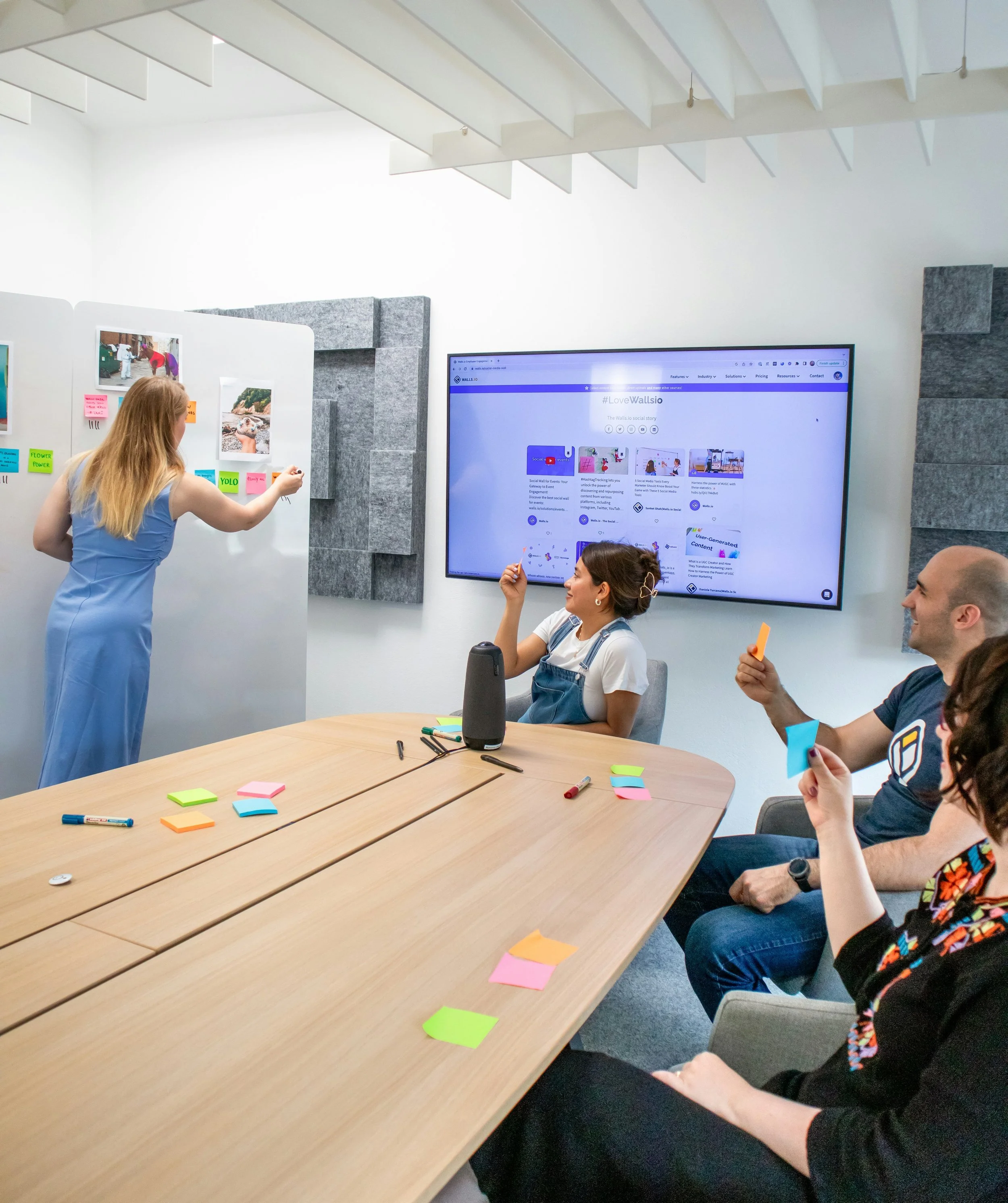This is Our Blog
The following are simple articles, written with the intent to make you challenge common knowledge and foster new habits. We don't claim we know more than anyone. We know experts that are well versed in their fields, and we base our writings on experimental living.
"Is wisdom derived from experience more or less valuable than data produced by controlled research?"
-Brené Brown
Looking for something specific?
Enjoy the read, and leave us your thoughts while you are at it.
Every team has that one person — the steady one. The calm voice in the storm. The leader, manager, or colleague who quietly keeps things running, who notices the details others miss, who holds space when everyone else is overwhelmed.
Resilience” has become one of the most overused words in the modern workplace.
We hear it everywhere — in leadership programs, HR strategies, even job ads. But what if the way we talk about resilience is quietly contributing to the very burnout we’re trying to prevent?
Every organisation talks about managing change. Few talk about feeling it. Behind every restructure, new system, or strategic shift are real humans — with uncertainty, hope, and often quiet fear. For leaders, guiding people through change isn’t just a communication exercise. It’s an emotional one
Every organisation talks about managing change. Few talk about feeling it. Behind every restructure, new system, or strategic shift are real humans — with uncertainty, hope, and often quiet fear. For leaders, guiding people through change isn’t just a communication exercise. It’s an emotional one.
Resilience” has become one of the most overused words in the modern workplace. We hear it everywhere — in leadership programs, HR strategies, even job ads. But what if the way we talk about resilience is quietly contributing to the very burnout we’re trying to prevent?
For years, leadership was defined by strength, decisiveness, and control. But the workplace is changing — and so are the expectations of those who lead it. Today, people want something different. They want leaders who listen, understand, and care. Enter: compassionate leadership.
Burnout used to look obvious — long hours, visible exhaustion, the person who finally hit a wall. Now? It’s quieter. More subtle. More sophisticated. People are burning out while looking fine on the surface. They’re still delivering, still smiling, still saying “All good!” in team meetings. But inside, they’re emptying out.
For many leaders, “good leadership” has long been defined by availability, being there for everyone, all the time. But here’s the truth: constant availability isn’t leadership, it’s overextension. The best leaders don’t just lead with empathy, they lead with boundaries. Because when leaders set healthy limits, they don’t only protect their own wellbeing… they model it for their teams.
Workplaces thrive when people feel seen, heard, and supported. If disconnection has crept in, it’s not too late to rebuild. It starts with one genuine conversation at a time. When connection returns, so does trust, creativity, and the spark that makes work feel meaningful again.
It’s what happens when people stay — not because they have to, but because they want to. Because they feel seen, supported, and genuinely cared for. And at the heart of it all? Caring leadership.
Leadership isn’t just about strategy, targets, or performance metrics. It’s about people — and with that comes an emotional weight that few talk about, but many quietly carry. Behind every decision, conversation, and check-in, there’s a hidden mental load that leaders take home at the end of the day.
It’s one of the most common transitions in the workplace — a high-performing employee gets promoted into their first leadership role. On paper, it’s a win. In reality, it often comes with something few people talk about: quiet struggle. Behind the new title and extra responsibility, many new managers are quietly overwhelmed, uncertain, and running on anxiety rather than confidence.
Let’s be honest — most new managers don’t feel ready. They’re promoted for being good at their jobs, handed a team, and told to “lead.” But leading people is nothing like managing tasks. Suddenly, the skills that made them great individual contributors — focus, efficiency, control — don’t quite fit anymore.
For years, leadership training focused on technical skill, efficiency, and execution. But today’s most effective leaders are proving something different: emotional intelligence isn’t soft — it’s strategic.
Leadership is often described as rewarding, purposeful, even inspiring — and it is. But what’s rarely talked about is the mental load that comes with it. Leading people means carrying more than just a to-do list — it means carrying the emotional weight of others, too
Every organisation wants a culture of trust. It’s written into values, embedded in strategy documents, and echoed through leadership speeches. But here’s the thing: trust doesn’t live in policies. It lives in the everyday moments between people — the quiet check-ins, the honest feedback, the times a leader says, “I hear you.
It’s what makes people speak up, take ownership, and go the extra mile. But when trust is broken — through poor communication, inconsistent leadership, or unaddressed stress — everything slows down. Engagement drops, collaboration fades, and good people quietly disengage.
We talk a lot about performance, productivity, and engagement. But if there’s one thing that truly changes how people show up at work — it’s how much their manager genuinely cares. Care might sound soft, but it’s one of the strongest leadership tools there is. Because when people feel seen, supported, and safe, they don’t just work harder — they work better.
In modern workplaces, the role of a manager has expanded far beyond managing performance. They’re expected to recognise the early signs of burnout, support wellbeing, mediate conflict, and create psychological safety — all while hitting targets and managing their own workload.
The role of a manager has changed. Today’s leaders aren’t just responsible for performance — they’re expected to support wellbeing, foster inclusion, and navigate uncertainty, all while hitting targets and leading hybrid teams.
Leadership is often painted as strength — vision, resilience, drive. But what happens when the people who lead, motivate, and inspire everyone else… have nothing left in the tank?
Managers sit in one of the most demanding spots in any organisation—caught between senior leadership’s expectations and their team’s needs. They’re the bridge, the translator, the motivator, and often, the emotional buffer. And lately, that middle ground is feeling heavier than ever.
We often talk about supporting employees—but what about the people leading them?
Managers are the first line of support when teams struggle with stress, conflict, or burnout. Yet, behind the scenes, many are silently running on empty themselves.
Let’s be honest—most managers don’t start out as people leaders. They’re promoted because they’re good at their jobs, great with systems, or strong in delivery. Then suddenly, they’re handed something far more complex than any project plan: people. Managing tasks is straightforward. Leading humans? That’s where it gets real.
Support isn’t just a buzzword. It’s the difference between a team that merely survives the week and one that shows up with energy, creativity, and purpose. And in today’s world of high pressure, constant change, and growing mental health challenges, that kind of support isn’t optional—it’s essential.
We’ve all heard the saying, “People are an organisation’s greatest asset.” But the truth is, it’s not just about the people—it’s about how well they’re supported. Even the most talented employees can’t thrive in environments where stress is ignored, mental health is stigmatised, or workloads are unsustainable.
Modern workplaces are complex, fast-paced, and often high-pressure. Leaders are expected to deliver results while also safeguarding the wellbeing of their people. It’s a big responsibility—and one that can feel overwhelming without the right tools. That’s where Mental Health First Aid (MHFA) and Recognise, Respond, Refer (RFA) come in.
Psychological safety isn’t a buzzword—it’s the foundation of how people feel and perform at work. At its core, it’s about whether employees feel safe to speak up, share ideas, admit mistakes, or say they’re struggling without fear of judgment or backlash. And while many factors influence psychological safety, one has the biggest impact: leadership.
Every team wants better collaboration, smoother communication, and stronger results. But here’s the truth: none of that happens without trust. Trust is the glue that holds people together when deadlines are tight, when mistakes happen, or when big changes roll through the organisation. Without it, even the most talented group of individuals won’t perform at their best.































High performance” has long been the gold standard of success in Australian workplaces. It’s what we hire for, train for, and reward. But lately, it’s become clear that there’s a quiet trade-off behind those numbers, metrics, and milestones. Because when performance is pursued without pause — when productivity becomes identity — it comes at a human cost.